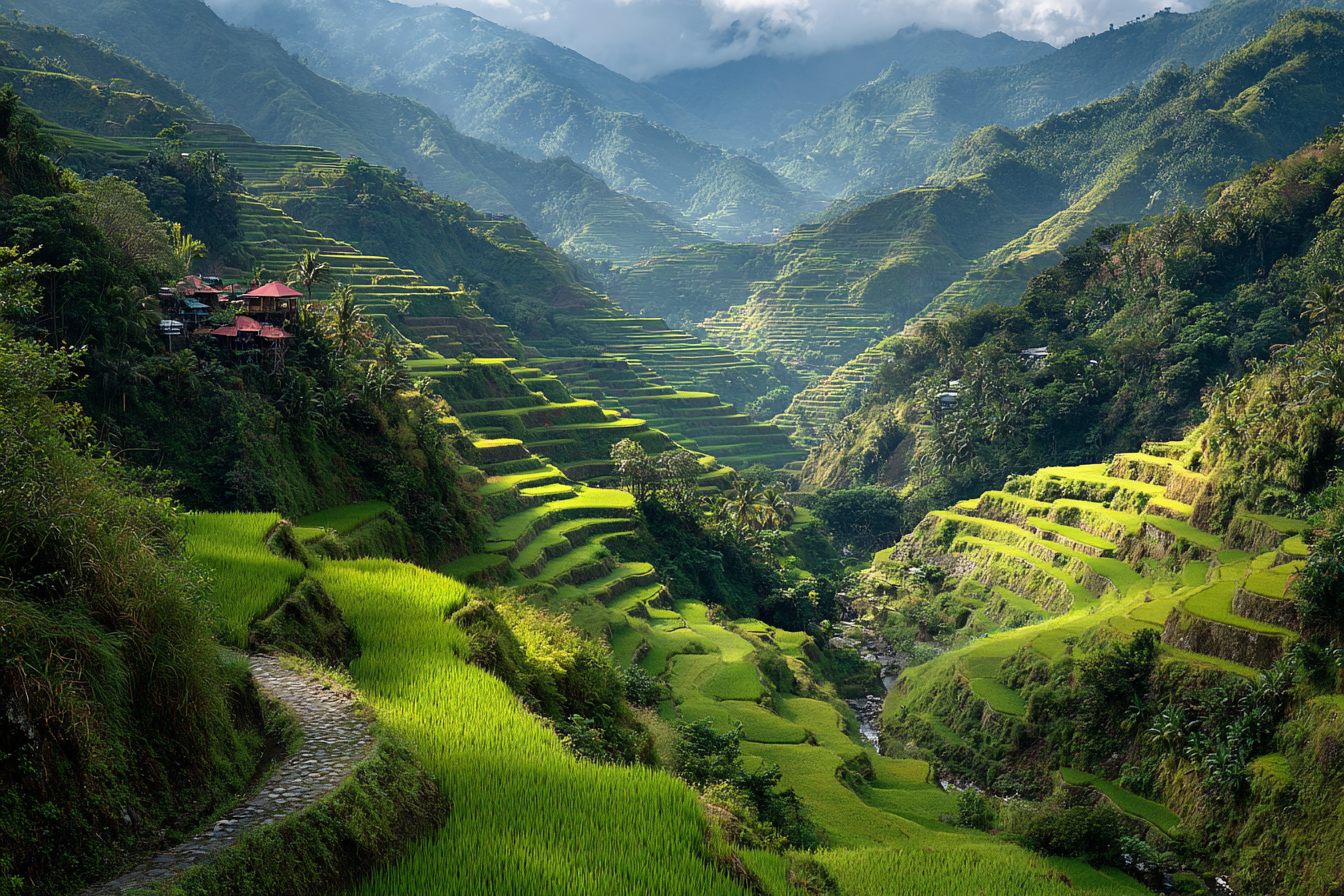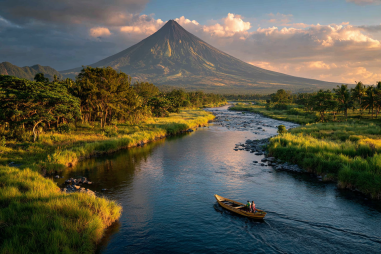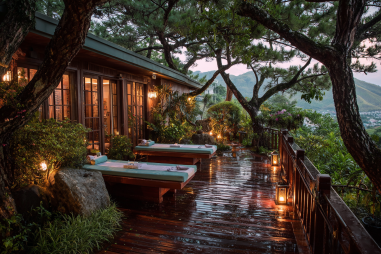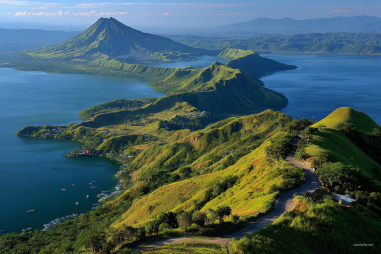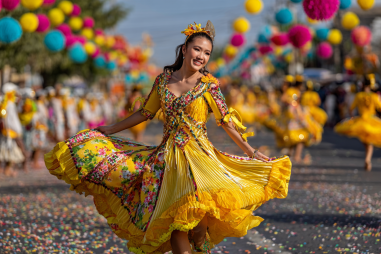The Philippines is a treasure trove of natural beauty, offering some of the most breathtaking landscapes in Southeast Asia. From majestic mountain ranges and ancient rice terraces to cascading waterfalls and lush tropical forests, the archipelago provides countless opportunities for travelers seeking tranquility, adventure, and a deep connection with nature. Whether you’re a seasoned trekker, a casual nature enthusiast, or someone simply looking to escape the hustle and bustle of city life, the natural wonders of the Philippines will captivate and inspire you. Let’s dive into the top nature travel destinations and everything you need to know for an unforgettable eco-adventure in this beautiful country.
Discovering the Philippines’ Natural Landscapes
The diverse geography of the Philippines—over 7,000 islands—creates a stunning array of natural landscapes that range from mountainous terrains to coastal paradises. You’ll find verdant forests bustling with unique flora and fauna, dramatic cliffs overlooking turquoise waters, and ancient terraces carved by indigenous communities over millennia. These landscapes are more than just eye candy; they are living heritage sites, ecosystems teeming with life, and sanctuaries for endangered species.
Top Nature Destinations in the Philippines
Among the many nature travel spots in the Philippines, a few destinations stand out as absolute must-visits for their beauty and cultural significance.
Banaue Rice Terraces
Often referred to as the “Eighth Wonder of the World,” the Banaue Rice Terraces in Ifugao are a remarkable example of human ingenuity harmonizing with nature. Carved into the mountains over 2,000 years ago by indigenous farmers, these terraces stretch across vast highland areas and offer breathtaking panoramic views. Trekking through the terraces provides an immersive experience—witnessing traditional farming practices and connecting with the culture of the Ifugao people.
Mount Pulag
For adventurous travelers, Mount Pulag in northern Luzon is a bucket-list destination. As the third highest mountain in the Philippines, Mount Pulag is famous for its “sea of clouds” phenomenon and spectacular sunrises. The cool mountain climate contrasts the tropical heat found elsewhere, making it a refreshing nature escape. Hiking up Mount Pulag takes you through pine forests, mossy forests, and unique alpine grasslands, where wildflowers bloom and endemic species roam.
Waterfalls Galore
The Philippines boasts some of Asia’s most stunning waterfalls, each promising a refreshing dip and tranquil ambiance:
- Kawasan Falls: Located in Cebu, these turquoise blue waters cascade through multiple tiers surrounded by lush rainforest.
- Maria Cristina Falls: Known as the “Queen of Philippine Waterfalls,” it powers one of Mindanao’s major hydroelectric plants.
- Ditumabo Mother Falls: Situated in Bicol, this powerful waterfall offers an invigorating trek through the forest.
Visiting these waterfalls not only refreshes the body but soothes the soul amid nature’s embrace.
National Parks and Protected Areas
The Philippines takes conservation seriously, with numerous national parks and protected areas safeguarding its diverse ecosystems. These parks are ideal spots for eco-tourism, allowing visitors to appreciate nature responsibly while contributing to environmental preservation.
Examples include:
- Puerto Princesa Subterranean River National Park: Famous for its underground river and limestone karst mountain landscapes, this UNESCO World Heritage site offers boat tours inside a vast cave system filled with stalactites and stalagmites.
- Taal Volcano Protected Landscape: A unique natural area centered on the world’s smallest active volcano, surrounded by a lake and picturesque views.
- Mount Apo Natural Park: The home of the Philippines’ highest peak and rich biodiversity, including the endangered Philippine eagle.
Wildlife Spotting Opportunities
The Philippines is considered a biodiversity hotspot with many endemic and rare species. Nature travelers often dream of spotting extraordinary wildlife in their natural habitats, and the country delivers in spades.
- Philippine Eagle: Catch a glimpse of the majestic Philippine eagle, one of the rarest eagles worldwide, in Mount Apo and other forested regions.
- Whales and Dolphins: Waters around Donsol and Southern Leyte are famous for whale shark and dolphin watching, providing safe encounters with these gentle giants.
- Tarsiers: The tiny tarsier primates found in Bohol are amazingly cute and fascinating nocturnal creatures that captivate visitors.
Nature Tours and Guided Hikes
Joining guided hikes and nature tours is a fantastic way to deepen your understanding of the Philippines’ ecology and culture. Local guides share insights about flora, fauna, and indigenous traditions, making the experience richer and safer. Many hiking trails are well-maintained, ranging from beginner-friendly walks to challenging climbs.
Popular guided trails include the Banaue rice terraces circuit, Mount Pulag overnight trek, and jungle hikes in Palawan’s protected areas. Eco-lodges and community-run tours are also available, ensuring your trip gives back to local communities.
Best Times for Nature Travel in the Philippines
Timing your nature trip to the Philippines can significantly impact your experience. The best months to explore natural destinations are generally during the dry season from November to April. This period offers clearer skies, safer hiking conditions, and more accessible roads to remote areas.
The rainy season from June to October can pose challenges like slippery trails, unexpected floods, and limited visibility, but with proper preparation, it’s still possible to enjoy off-the-beaten-path adventures and lush green landscapes.
Conservation and Responsible Tourism
Given the fragile nature of many ecosystems in the Philippines, responsible tourism is essential. Visitors must respect local customs, minimize waste, avoid disturbing wildlife, and stick to established trails to prevent erosion and habitat destruction. Supporting community-based tourism projects ensures that local people benefit directly from tourism while helping conserve their environment.
Remember to take only pictures and leave only footprints. Small acts of responsibility will help preserve these breathtaking destinations for future generations to enjoy.
What to Pack for Your Nature Trip
Preparing the right gear enhances your comfort and safety when exploring the Philippine outdoors. Here’s a handy packing checklist:
- Lightweight, breathable clothing suitable for tropical climates
- Sturdy hiking shoes or boots
- Rain jacket or poncho, especially if traveling in the rainy season
- Hat and sunglasses for sun protection
- Insect repellent to guard against mosquitoes and insects
- Reusable water bottle for hydration
- Camera or smartphone to capture scenic views
- Basic first aid kit
- Snacks or energy bars for treks
- Eco-friendly toiletries and biodegradable sunscreen
With these essentials, you’ll be well-equipped to enjoy the natural wonders of the Philippines safely and responsibly.
Embrace the Philippines’ Natural Beauty
Whether wandering through the ancient rice terraces of Banaue, summiting Mount Pulag to watch the sunrise, or feeling the cool mist of a cascading waterfall, the Philippines offers nature travel experiences like no other. Its rich biodiversity, spectacular landscapes, and warm local communities make it a perfect destination for travelers who seek both adventure and tranquility. By exploring responsibly and embracing the country’s natural wonders, you’ll leave with unforgettable memories and a deeper appreciation for the planet’s incredible beauty.

